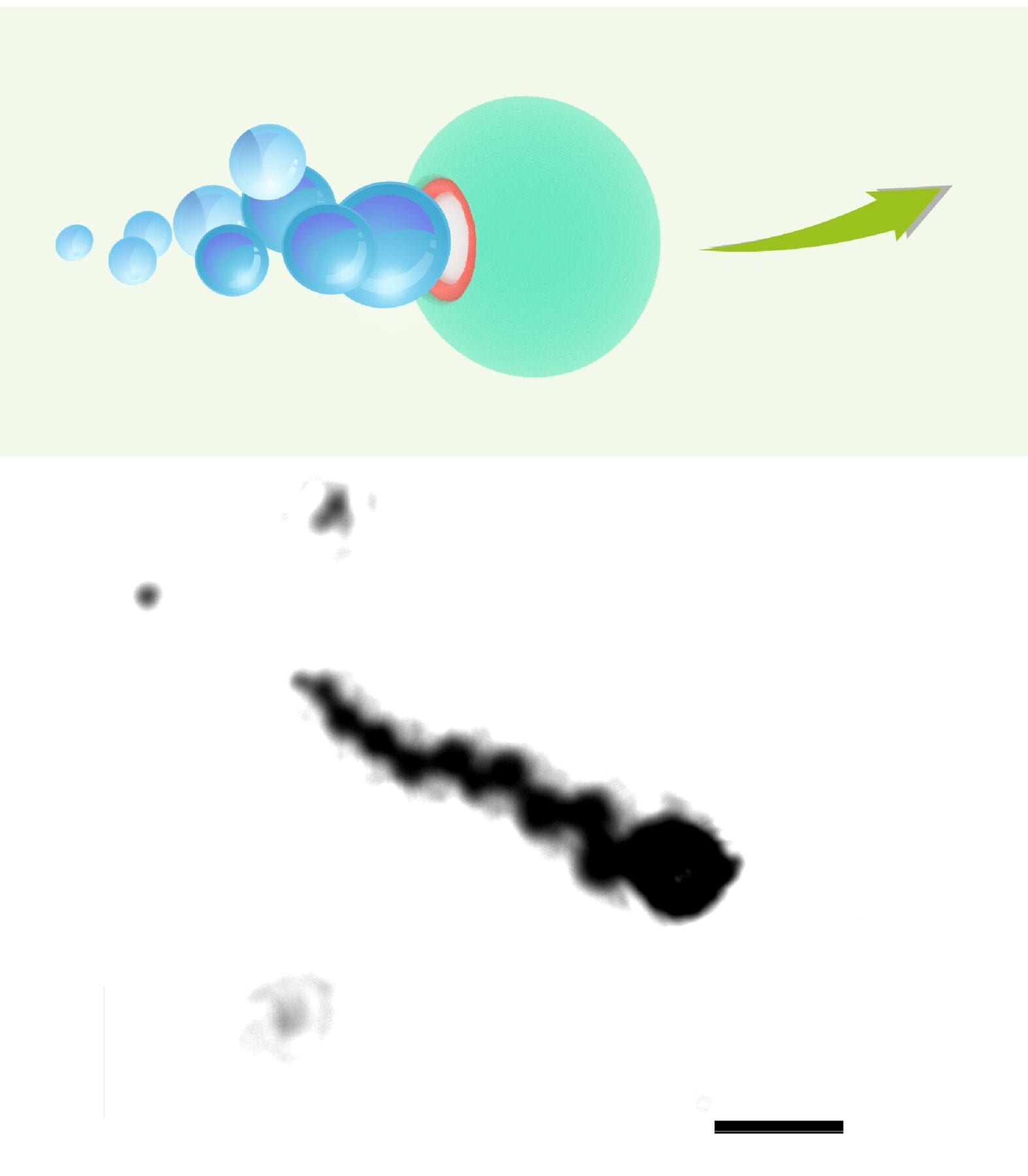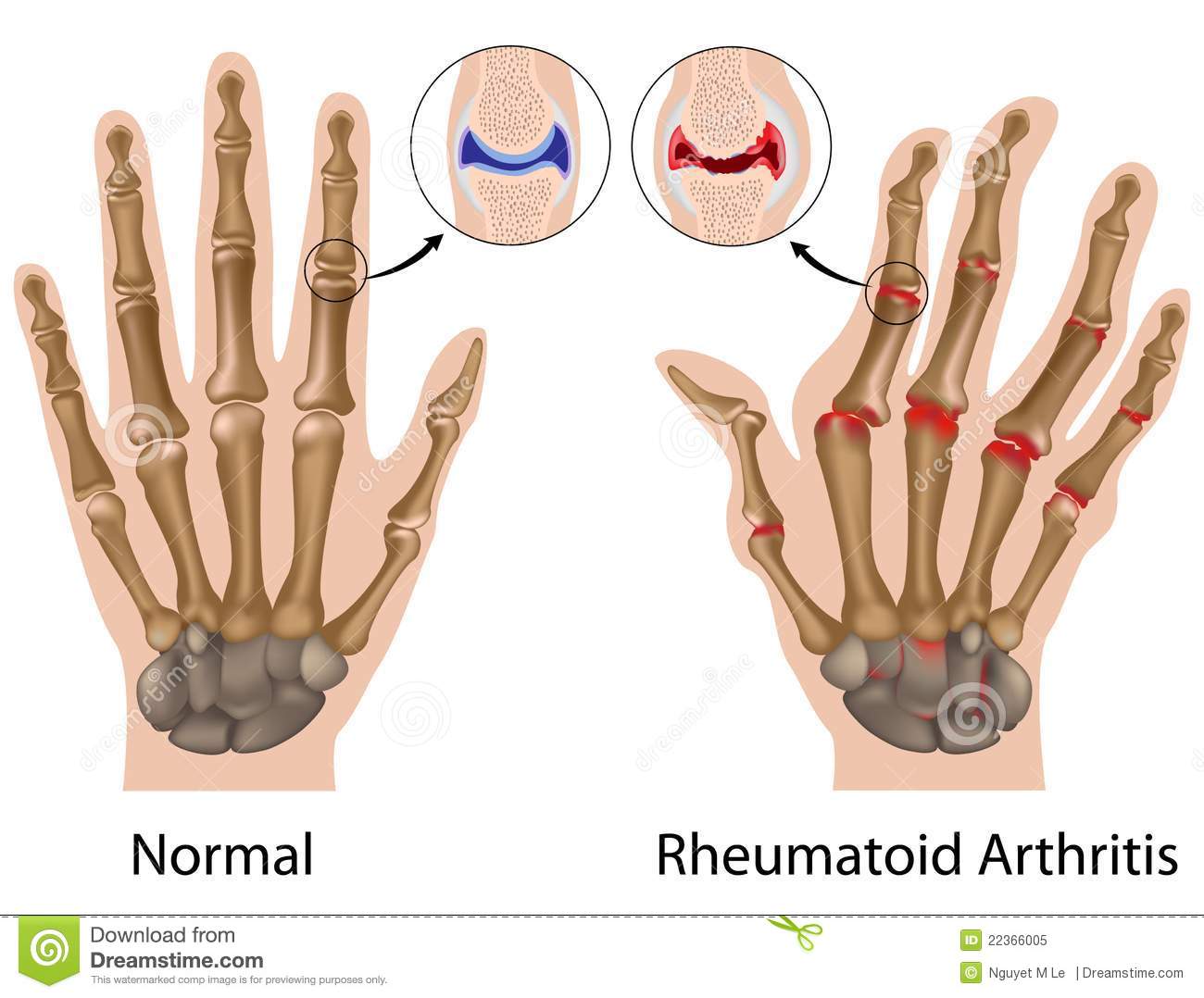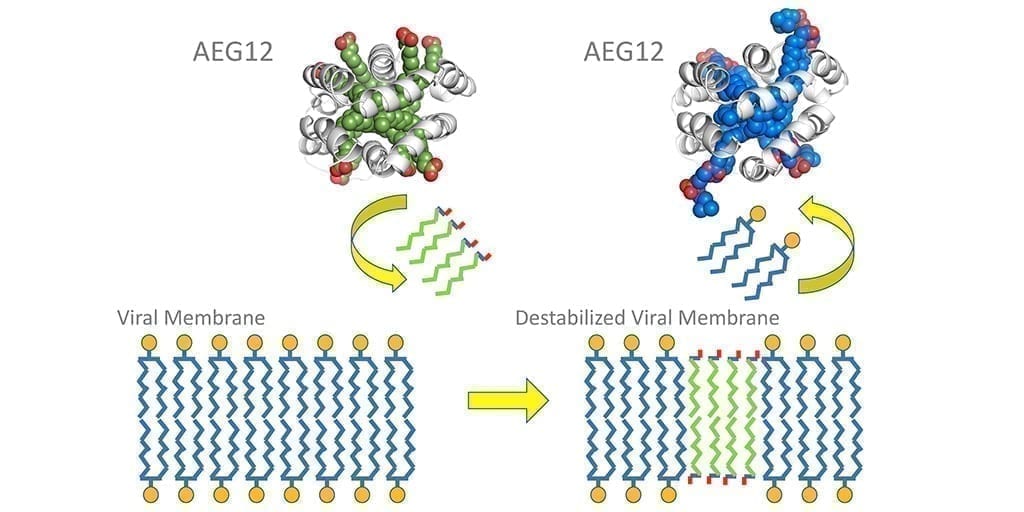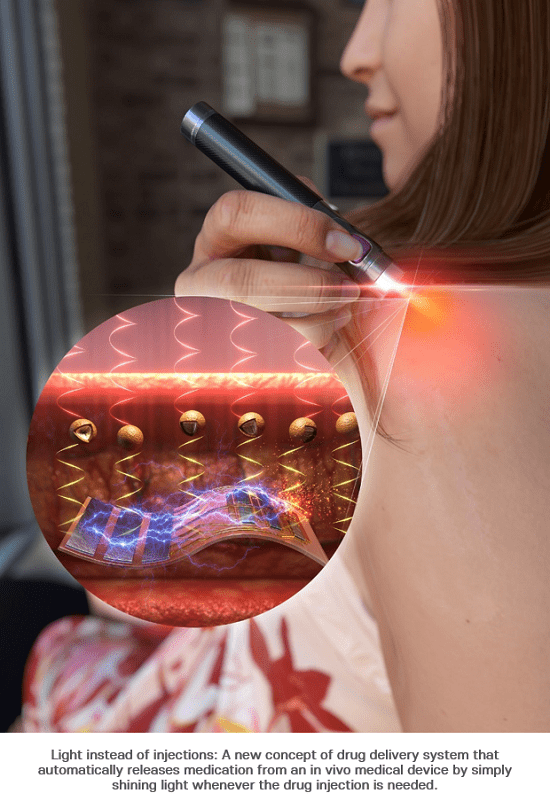
Hydrogen-propelled micromotors (illustration, top, and microscope image, bottom) improved rheumatoid arthritis symptoms when injected into rats’ joints. Scale bar, 20 µm.
Credit: Adapted from Nano Letters 2021, DOI: 10.1021/acs.nanolett.0c04438
Rheumatoid arthritis is a chronic inflammatory disorder marked by joint pain, swelling and damage. Although medications, such as steroids, anti-inflammatory drugs and immunosuppressants, can help slow joint destruction and relieve pain, they have side effects and aren’t completely successful. Now, researchers reporting in ACS’ Nano Letters have developed magnesium-based micromotors propelled by hydrogen bubbles, which improved rheumatoid arthritis symptoms when injected into the joints of rats.
Scientists have linked rheumatoid arthritis development to the excess production of reactive oxygen species (ROS). ROS can oxidize and degrade cartilage and bone, as well as activate the expression of inflammatory cytokines. A new type of therapy, hydrogen gas, can neutralize ROS and decrease inflammatory cytokine levels when given to patients in drinking water. However, the gas is poorly soluble in body fluids and quickly eliminated when given orally, limiting its therapeutic effects. Fei Peng, Yingfeng Tu, Yingjia Li and colleagues wanted to find a way to produce and deliver hydrogen gas directly inside an inflamed joint.
The researchers based their system on magnesium-based micromotors –– tiny spheres that react with water to produce hydrogen bubbles, which propel the motors. They coated the micromotors with hyaluronic acid, a joint lubricant, leaving a small opening for the magnesium to react with water. When placed in simulated joint fluid, the micromotors showed prolonged, sustained release of hydrogen bubbles and could move on their own. The team then injected the micromotors into the joints of rats that served as an animal model of rheumatoid arthritis and used ultrasound to visualize them. Compared with uninjected rats, the treated rats showed less-swollen paws, reduced bone erosion and lower levels of inflammatory cytokines. Although the micromotors still need to be tested in humans, they show great potential for the therapy of rheumatoid arthritis and other inflammatory diseases, the researchers say.
Original Article: Treating rheumatoid arthritis with micromotors
More from: Sun Yat-Sen University | American Chemical Society
The Latest Updates from Bing News & Google News
Go deeper with Bing News on:
Rheumatoid arthritis
- AbbVie Stock Falls As Company Warns of Continued Humira Sales Slump
AbbVie warned Friday that sales of its blockbuster arthritis drug, Humira, will continue to lose market share to biosimilars.
- Blood test finds knee osteoarthritis up to 8 years before it appears on X-rays
Detecting knee osteoarthritis with a blood test up to eight years before it appears on X-rays -- as researchers have done -- could lead to therapies that delay disease progression and restore joint ...
- Rheumatoid Arthritis and Osteoarthritis patients genetically susceptible for developing COPD, suggests study
Rheumatoid Arthritis and Osteoarthritis patients are genetically susceptible to developing COPD, suggests a study published in the Frontiers in Medicine.Observational studies have reported ...
- Biogen's Tofidence Gets Positive CHMP Opinion For Rheumatoid Arthritis,Juvenile Arthritis & COVID-19
Biogen Inc. (BIIB) said that the Committee for Medicinal Products for Human Use or CHMP of the European Medicines Agency or EMA ...
- Arthritis linked to blood cancer mutations
A team of Adelaide and U.S. researchers has discovered a link between a less common form of rheumatoid arthritis and gene mutations found in blood cancer.
Go deeper with Google Headlines on:
Rheumatoid arthritis
[google_news title=”” keyword=”rheumatoid arthritis” num_posts=”5″ blurb_length=”0″ show_thumb=”left”]
Go deeper with Bing News on:
Hydrogen therapy
- MIT Technology Review
This is what the priorities in the $95 billion spending package tell us about four military technologies and the way they’re reshaping how war is fought. Researchers are using generative AI and other ...
- Big event coming up? Brighten your smile with these No. 1 bestselling Crest Whitestrips, on sale for $25
Grab this at-home whitening kit while it's $5 off. It's not a massive discount, but it's nearly 20% off — and $25 is a whole lot cheaper than a professional whitening treatment, which can cost up to ...
- OCOchem Advances Hydrogen Formate Electrolyzer Process By 10x To Create World’s Largest Industrial Scale CO2 Electrolyzer Cell
OCOchem Advances Hydrogen Formate Electrolyzer Process By 10x To Create World’s Largest Industrial Scale CO2 Electrolyzer Cell ...
- Dead embryos implanted into aspiring moms hoping to start families, California suits say
In their own words, according to the complaint, the Catalina Island couple says “infertility treatment consumed (their) entire lives” — leading to a “low-grade” male embryo and a “high-grade” female ...
- Chemical Industry Boom Propels Anhydrous Hydrogen Fluoride Market: Expansion Creates Lucrative Opportunities
In fiscal year 2023, the anhydrous hydrogen fluoride market is anticipated to be worth US$ 3.25 billion, up from US$ 3.07 billion in fiscal year 2022. The market is anticipated to increase at a 5.8% ...
Go deeper with Google Headlines on:
Hydrogen therapy
[google_news title=”” keyword=”hydrogen therapy” num_posts=”5″ blurb_length=”0″ show_thumb=”left”]
[embedyt] https://www.youtube.com/embed?listType=playlist&list=PL0UjJ07OSXC83oV409r1yRju8-ihA1InJ&layout=gallery[/embedyt]










